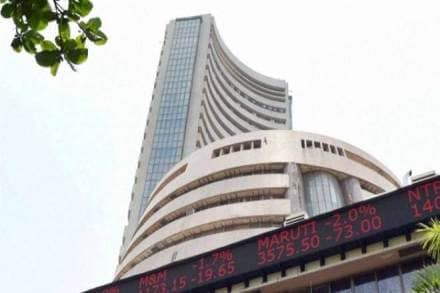Benchmark Indices touched yet another record high on Tuesday as the rally in quality stocks continued despite weaker economic growth. The Sensex surged 413.45 points or 1.01% to close at 41,352.17, the broader Nifty50 closed 111.05 points higher at 12,165. Markets have been rallying since the government cut corporate taxes on September 20, with the Nifty50 gaining 1460.20 points. This rally has been driven by a handful of stocks such as Reliance Industries, ICICI Bank, HDFC, HDFC Bank and Axis Bank, which contributed 964 points to the rally.
Dhiraj Relli, MD & CEO of HDFC Securities, said the recent rally in the benchmarks was driven by beneficiaries of the recent cut in corporate taxes.
The Bank Nifty has gained over 20% since September 20 to hit a record high of 32,140.25 on Tuesday. Bank stocks rallied on expectations of receiving $7.6 billion following resolution of select cases in bankruptcy courts such as Essar Steel, Prayagraj Power Generation, Ruchi Soya and RattanIndia Power. Banks are expected to be the biggest beneficiaries of the cut in corporate taxes.
Even as the benchmarks continued their upward journey, mid and small cap indices have consistently delivered negative returns since January 2018. In 2018, Nifty50 rose 3.1% while the Sensex rose 5.9%. In contrast, BSE Mid-cap Index lost 13.4% while BSE Small-cap Index lost 23.5% in 2018. In 2019, Nifty50 is up 12% while Sensex has gained 14.7%. The BSE Mid-cap Index is down 4% in 2019 while the BSE Small-cap is down 9%.This has hurt the portfolios of retail and high net worth individuals, leading to higher redemptions from mutual funds too. Net inflows into equity mutual funds hit a 41-month low in the month of November.
FPIs in contrast were buyers in every month, except three so far in 2019, but the buying is in select stocks. FPIs have so far invested $13.3 billion in equities so far in 2019. While Taiwan attracted a foreign inflows of $10.6 billion, Indonesia saw a purchase of nearly $3 billion between January and now. Tim Moe, chief Asia-Pacific equity strategist at Goldman Sachs, said, “The Nifty is a bit of deceptive benchmark with a very narrow leadership. The rise in passive investing which amplifies the benchmark leaders in the index, and a part of it is aversion towards taking liquidity risk.”
With economic growth slowing to a six-year low and lacklustre numbers reported by most corporates in Q2FY20, analysts have downgraded earnings forecast. For a sample of 2,597 companies (excluding banks and financials) net profits in Q2FY20 fell 39.2% year-on-year even after disregarding the exceptional losses of Bharti Airtel and Vodafone-Idea. For the first time in many years, corporate India’s revenues fell by 3.02% y-o-y in the September quarter, while operating profit margins contracted nearly 450 basis points y-o-y.
UBS Securities observed the support from local inflows has been key for Indian markets since FY16 in sustaining rich multiples on the backdrop of sustained earnings disappointments. The brokerage, which expects the Nifty50 to hit 12,300 by June 2020, said, “We believe the risk-reward is becoming less attractive in the near term.”
Indian equity market has been commanding premium valuations despite continued earnings disappointments. At the present levels of 12,165, the Nifty trades at a price-earnings multiple of 18.5 times one-year estimated forward earnings against the long-term average PE of 15.5 times. This compares with 11.9 times for Kospi and 14.6 for Jakarta Composite. Russian and Turkish equities were the cheapest in the emerging market with a forward price-to-earnings ratio of 6.7 and 6.2 respectively, Bloomberg data showed.
Fifteen of the 19 sectoral indices compiled by BSE gained on Tuesday, led by the BSE Metal and BSE Telecom, each gaining over 3%.
